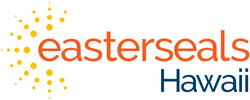
The ADA Turns 28
Written by Abigail Guerdat, Communications & Grants Associate at Easterseals Bay Area
On July 26, the Americans with Disabilities Act (ADA) will celebrate its 28th year as a law. This vital legislation was the culmination of decades of work, much of which took place in the San Francisco Bay Area by trailblazers of the disability rights movement. This month, we honor the champions who fought for their rights and started a social movement for equality.

504 Sit-in: The Longest in U.S. History
On April 5, 1977, hundreds of people with disabilities and advocates alike occupied federal buildings throughout the U.S. in an attempt to fully establish the regulations of Section 504 of the Rehabilitation Act of 1973—the most vital disability rights legislation in the U.S. until the enactment of the Americans with Disabilities Act in 1990.
However, by 1977 the regulations within Section 504 of the Rehabilitation Act of 1973 had still not been published. After back-and-forth between various federal offices and Congress, the disability community grew impatient—and rightly so. Not a single person with a disability was invited to represent the interests of the community during this process, so the American Coalition of Citizens with Disabilities (ACCD) was established.
By April 4, 1977 the final regulations were still unsigned by the Secretary of Health, Education and Welfare, Joseph Califano; on April 5, 1977, sit-ins and marches organized by the ACCD launched across the nation. People gathered in Washington, D.C., Atlanta, Los Angeles, Chicago, New York City, and more. Unfortunately, these sit-ins ended after just 28 hours, but in San Francisco, the 150-person sit-in, led by disability rights activists Judith Heumann, Kitty Cone, and Mary Jane Owen, continued for an entire month in the Federal Office Building. To date, San Francisco’s sit-in is still the longest sit-in of a federal building in U.S. history.

Connect with Us